NEWBURY PARK, Calif. – Just about a year ago, the headline for our Aston Martin DBX review read as “Two exceptional cars for the price of two.” And not two affordable cars, either. No, no, that one cost $222,000. Ka ching. Yet, as I argued at the time, you were at least getting the equivalent of a $110,000 luxury SUV and a $110,000 sports car in one package. In the context of garage space, how very economical.
Well, today we’re considering a 2023 Aston Martin DBX707. It cost $292,186, which is pretty much the cost of three not-at-all-affordable cars. I’m going to tell you right now that it hasn’t picked up a convertible roof or a pickup bed or some other magic trick to be three cars in one. It’s still just an exceptional luxury SUV and exceptional sports car in one. So, what exactly do you get for the cost of an extra exceptional car?
The name 707 refers the amount of power its engine produces in pferdestärke, or metric horsepower, which should be the first sign that its engine is as British as Queen Victoria. You see, Great Britain and its former American colonial holdings don’t believe in any of that metric stuff and instead use mechanical horsepower, which would be 697. I guess DBX697 sounds like a license plate rather than the vaguely Bondian DBX707? Either way, that would be 155 horses more than the DBX. It produces 147 more pound-feet of torque, too, for a total of 663 lb-ft. Please don’t ask what that is in newton-metres.
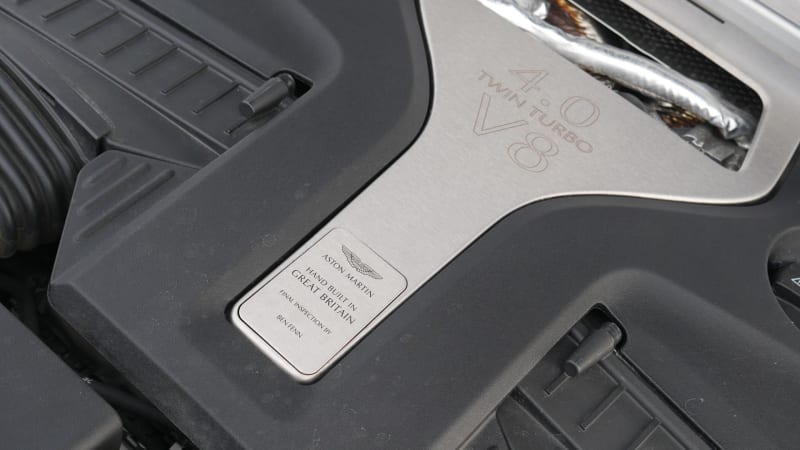
To get all that extra power, Aston Martin extensively worked over the DBX’s already worked-over version of a 4.0-liter twin-turbo V8 sourced from Mercedes-AMG. Indeed, you won’t find a car with the 707’s specs wearing a three-pointed star. Among the changes Aston originally made was to the cylinder firing order, which results in an odd, slightly gravelly tone that must totally cheese off the ladies and gentlemen in Affalterbach. The 707 then gets new turbochargers, different induction and exhaust systems, and a new engine control unit. The drive shaft is also carbon fiber, the final drive ratio is 7% shorter and the shift paddles are not only bigger, but made of carbon fiber rather than metal. So, like good Queen Vicky, the 707 engine was raised in England but the DNA is pure German.
To handle all that extra power and to aid in slashing the 0-60 time down to 3.1 seconds from 4.3, Aston engineers replaced the standard DBX’s traditional automatic with a different AMG nine-speed unit that features a wet clutch pack in lieu of a torque converter. I didn’t know that particular piece of information during my week with the DBX707, so I can at least say that in mundane driving, it shifts smoothly enough to not draw attention to its more performance-oriented lineage.
More aggressive driving? Well, unfortunately, the DBX707 came to me amidst one of Southern California’s multiple atmospheric rivers. That’s great for making the surrounding mountains look like I was fittingly testing the Aston in Scotland, but not so good for road conditions. Coming around a blind corner at 45 mph to discover a Mini Cooper-sized boulder in the road has a way of ruining your day. And then there was the standing water. And the mud. And the cars veering into your lane to avoid the standing water and mud. So yeah, vigorous lap of the Santa Monica Mountains was not in the cards.
Now, had I come upon a Flintstonian obstacle, the 707 comes standard with carbon ceramic brakes featuring six-piston calipers with 16.5-inch rotors up front and 15.4-inch rotors in the back. They fill standard 22-inch wheels, which in the test car meant gold calipers behind matte black spindles. They paired perfectly with the matte paint, which is officially known as “Q Satin Titanium Grey” but is totally green.
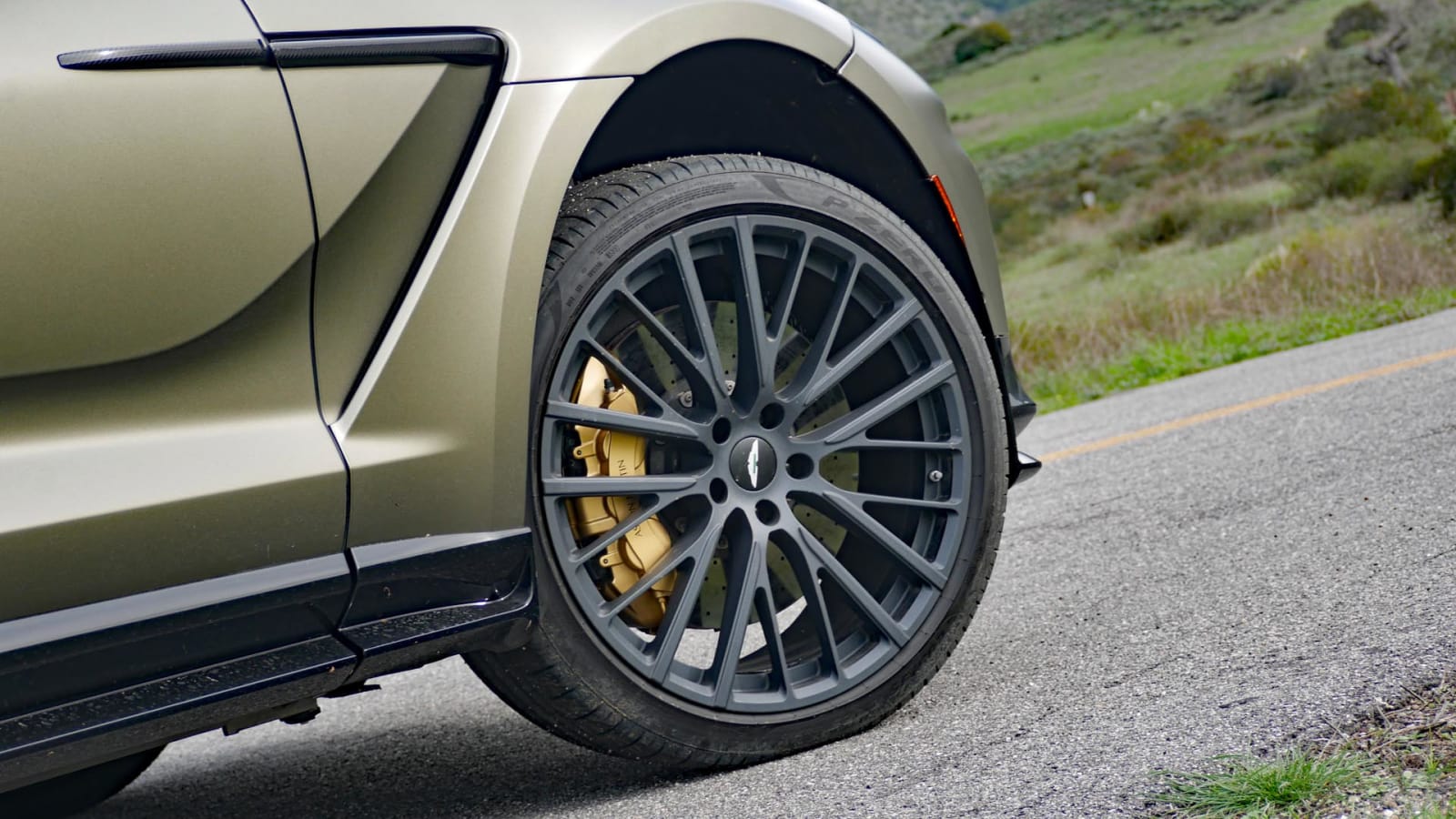
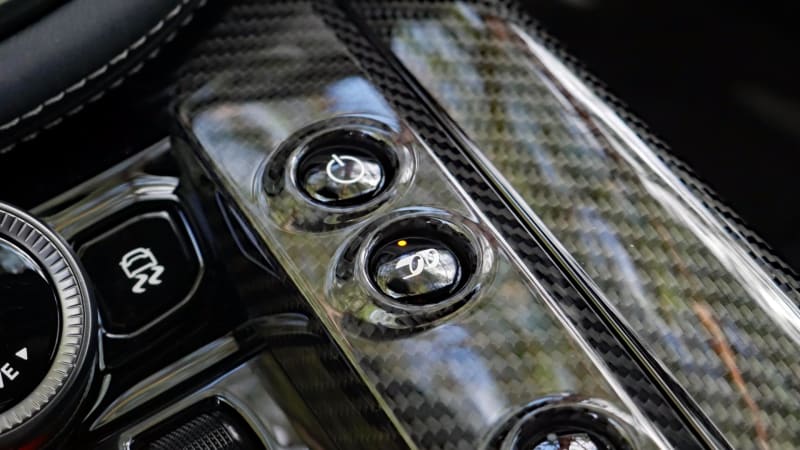
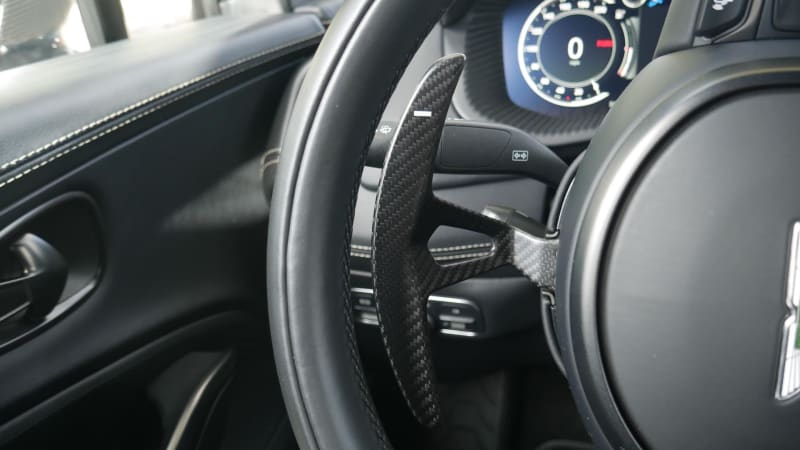
There are other chassis improvements. The steering apparently features more effort off-center in order to enhance feel and response. The novel 48-volt active roll bars were tweaked for a similar purpose, while the suspension was retuned to better manage heave, pitch and body roll. It should be said that in my more vigorous drives of the standard DBX, those motions were not remotely excessive. Basically, Aston Martin is piling onto one of the finest, most rewarding SUVs ever created – especially in terms of the steering, which remains one of the best examples found in any modern motor vehicle regardless of body style. I’m also happy to report that the 707’s ride quality doesn’t turn to granite as a result of the suspension work.
The big news really is the engine, though. Of all the standard DBX’s dynamic gifts, the engine is arguably the least impressive. “Smooth” and “effortless” was the best I could level at it. By contrast, the DBX707 is ferocious, slamming you and the family into your seats as the all-wheel-drive system claws at the pavement and slings you off into the distance. Of course, such rapid acceleration isn’t as special in this dawn of the EV Era. A Rivian R1S can theoretically match the 707’s 0-60 time for hundreds of thousands less; the Tesla Model X is a half-second quicker.
While they offer silence, however, the 707 provides a booming soundtrack of roaring thunder accompanied by sharp barks from the unique quad exhaust system. It’s an active system with two settings of “Loud” and “Louder” (that’s probably not their names) activated by a button on the center console. As in the regular DBX, things still don’t get juvenile à la Jaguar, but it’s still mighty boisterous. And you don’t even have to be moving to enjoy it. Start the car normally and the engine/exhaust fire to life with a pointed, yet socially acceptable roar and bark. However, if you press that Start button while also pulling the gigantic left shift paddle (that’s carbon fiber in the 707), you engage a little Easter egg start-up sequence turns the exhaust volume beyond “Piss the Neighbors Off” (also known as “Hey, look at me!”). Isn’t it nice when you can do something in a car these days without pressing a touchscreen?
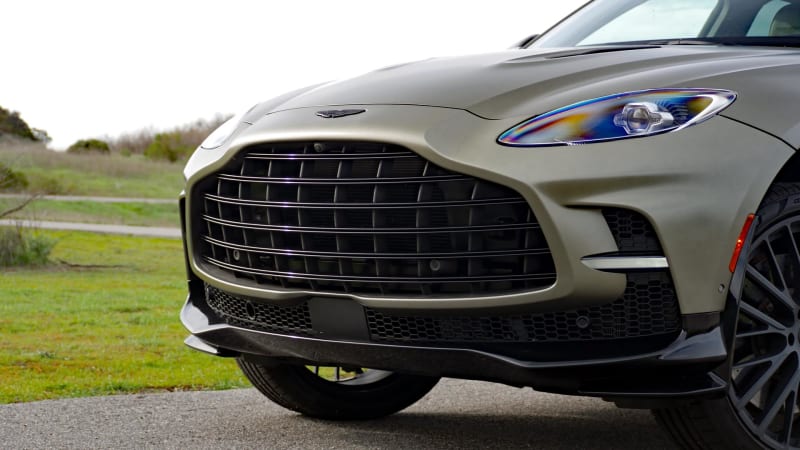
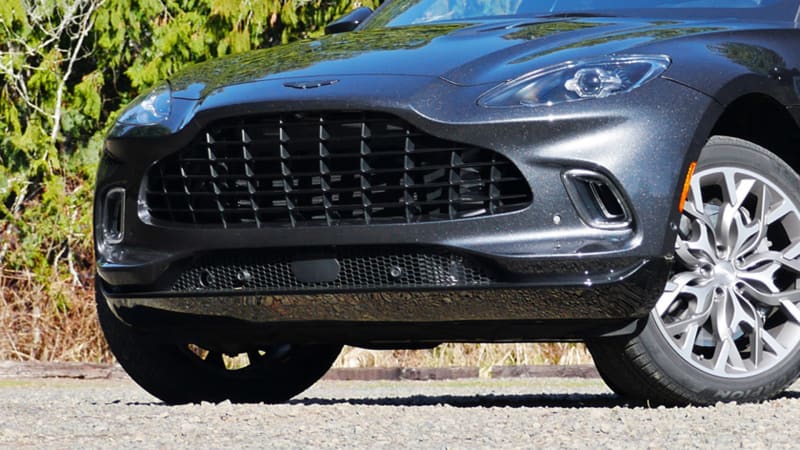
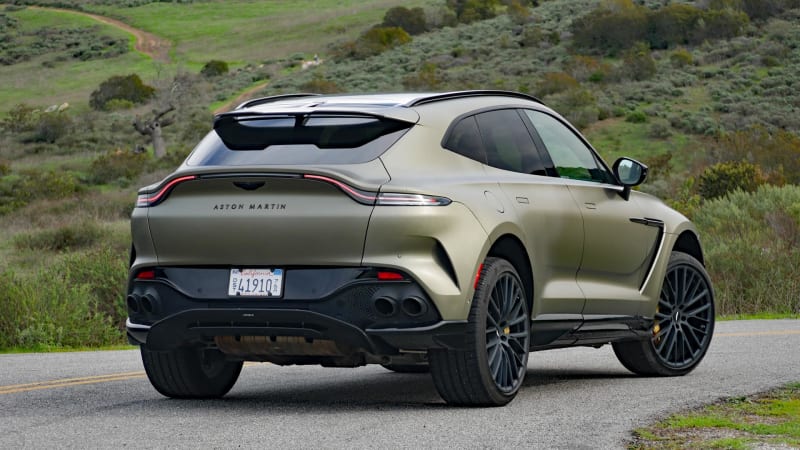
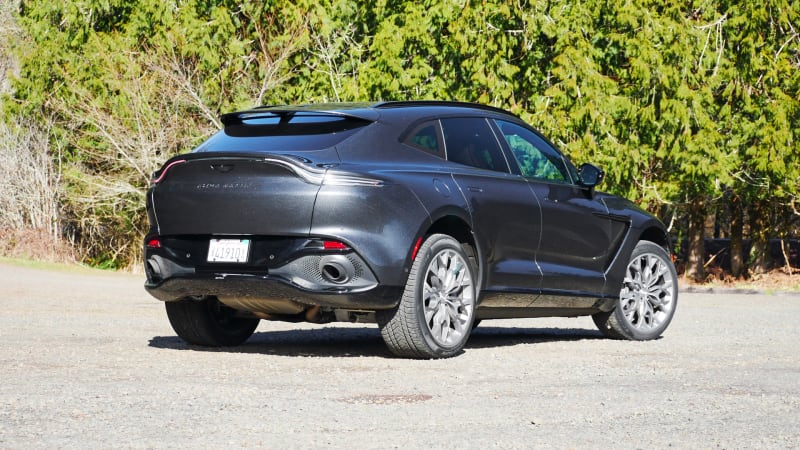
Of course, the DBX707 does not have a touchscreen. It looks like it does, and you’re guaranteed to want to peck at its Aston-specific user interface as if it does, but the system uses the same hardware as the final rendition of Mercedes‘ old COMAND interface: a redundant combo of knob-and-touchpad controlling things on a not-touch screen. That wasn’t so great, and neither is this. The UI could be laid out better, and it sure would be nice if you could see more than one thing at once (such as audio and navigation). At least Aston provides lots of real buttons on the center console, which also gets bigger cupholders after people complained (me included) about how useless they were originally. For the record, they’re only sorta better.
Finally, the DBX gets a visual makeover in its transformation to 707 and, personally, I don’t think it’s for the better. (Pictured above is the DBX707 in green and regular DBX in grey). The enlarged grille may have historical precedent in that it resembles various Aston Martin Zagato limited-edition models, but I’ve never been too keen on those. To be fair, it was enlarged, in part at least, for increased cooling, so it’s not just following the current trend of grille engorgement. There are also new air intakes, brake cooling ducts and “louvred bonnet blades.” Everything is finished in gloss black or, if you prefer, carbon fiber. The rear sees an enlarged spoiler accented in carbon fiber, but you’ll be excused for missing that as your eyes will inevitably be drawn to the enormous diffuser sticking out beyond the bumper. There are also rear quarter vents added just behind the wheels.
The look doesn’t stray into Tacky Land, and the standard DBX doesn’t exactly challenge the DB9 for beauty, but it’s hard to envision ponying up that extra cash just because it’s such an obviously special look. Even in terms of exclusivity, you’re talking about a rare version of a rare car. I’d personally be impressed by any version of the DBX wearing this stunningly classy combo of apparently-not-green exterior and actually-called-green interior accented in black. As for the engine, sure, it absolutely elevates the DBX to a level that perhaps the standard car should be closer to. Is that worth the price of yet another exceptional car? Honestly, who cares? If you can afford it, go for it. Just remember to brush up on your pronunciation of pferdestärke.
Related Video:
